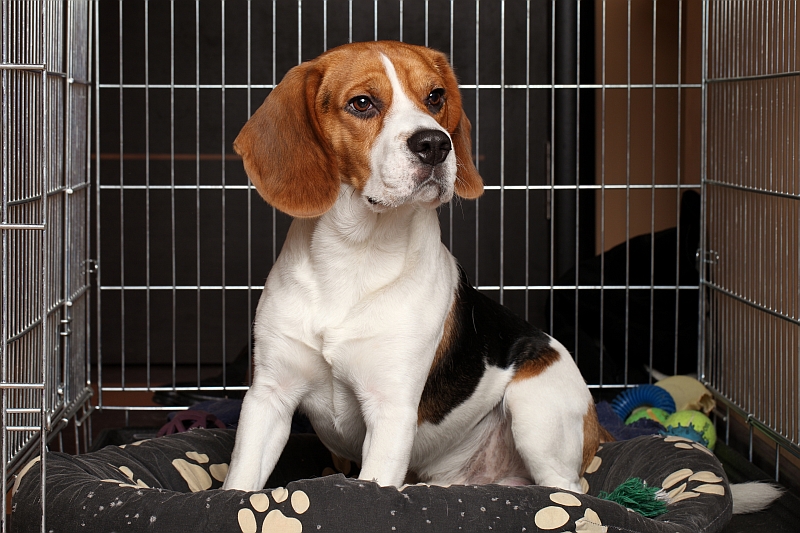New dog owners are faced with a lot of decisions when it comes to buying products for their new friend. Getting a dog crate seems like one of the easy ones, but there are a lot of considerations that should go into picking the right crate for your dog, and for your needs.
In case you are unfamiliar with dog crates, they are primarily used for training dogs, in particular for housebreaking, but can also be used during transportation, when leaving them alone in the house, and a variety of other purposes.
If you have chosen to crate train your dog, there are several options when it comes to crates, and some are certainly better-suited for this task than others. There are five different types of crates: wire, plastic, soft (fabric), heavy-duty, and wooden crates. Each of the crate types offer certain benefits, but as you might have guessed, has drawbacks as well.
Wire Crates
Not all, but many wire crates are collapsible, which means that when they are not in use they can be stored without taking up much space. Additionally, they offer dividers so that you can use a single crate from puppyhood to adulthood without having to purchase several different sized crates as your dog grows. They are also very easy to maintain and clean since they have a removable floor tray. A wire crates also provides maximum air flow so it is ideal for hotter climates.
The downsides of having a wire crates it he additional noise you will have to endure as the crate can rattle, and as the dog moves around the plastic tray will make plenty of noise as it clicks against the floor wiring. Wire crates are also heavier than plastic counterparts of similar size, so they are more difficult to carry around.
Plastic Crates
Plastic crates offer a more enclosed environment, so they are more suitable for dogs that prefer time to themselves, and may be cause for anxiety if you have a dog that loves to see what is going on around her at all times. Plastic crates are lighter, and much easier to handle, and are can be used for travel with an airplane. There is some color variety when it comes to plastic crates, so if the (usually) black wire crate is aesthetically offensive to you then the plastic crate may be a solution.
Due to the cozier structure of the plastic crate, the interior can get hot, and do so quickly. Plastic dog crates are a bit more difficult to clean; however, they do offer the option to remove the top portion for easier access (and storage).
Soft Crates
As the name suggests, soft crates are made of tough fabric, or mesh which allows them to be collapsible, and offers a lighter alternative to its wire and plastic counterparts. They are mostly suitable for small dogs, or medium sized dogs (as long as they are not destructive).
They are, however, more difficult to clean, especially if your dog has an accident in such a crate. Also if your dog is left unsupervised, she might find it easy to paw or chew her way out of the crate.
Heavy-Duty & Wooden Crates
Though very different, we are grouping these two options together since they are not as commonly used. Heavy duty crates are meant for especially destructive dogs, or if the crate needs to be fastened to a surface such as the back of a truck. Wooden crates are useful if the goal is to help the crate blend in with the rest of the furniture in the house, and not stand out as a dog accessory, but just another piece of furniture. Both of these options can be costly, and destructive dogs can chew their way through the wooden crate.
To pick the most suitable crate for your need, base your decision on the above details, and your dog’s physical characteristics, personality, and space requirements.
What Is the Right Size?
The size of the crate should be just large enough for your dog to be able to stand with an inch or two of space in the front and back, and a couple of inches from the top of the head. If your dog has ears that stand erect the crates should allow space for the dog so that her ears are not touching the top of the crate while she is standing.

